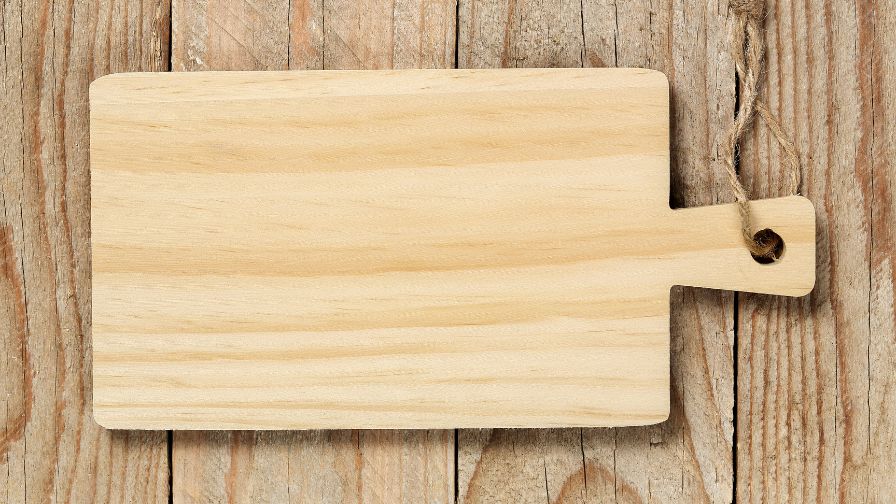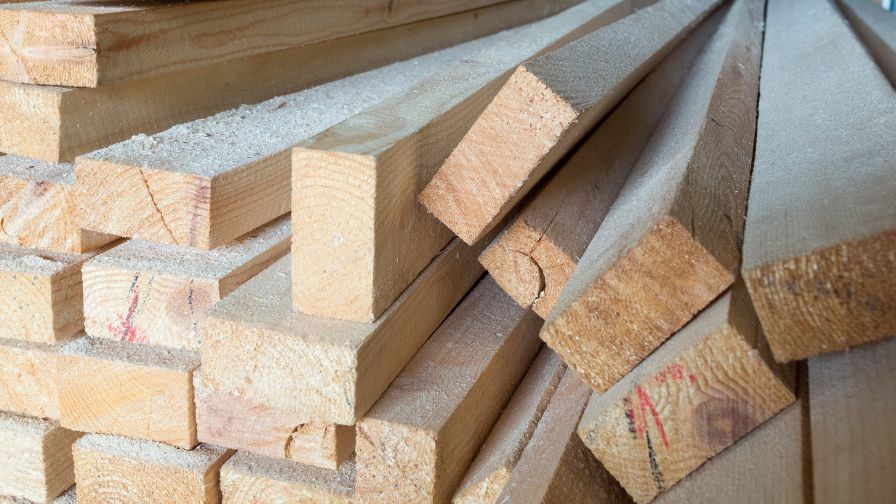
There are a lot of different types of wood that can be used to make a cutting board. Some woods, like maple, are very popular because they are resistant to bacteria and moisture. Other woods, like oak, are a little more porous and will need to be oiled more often in order to protect them from bacteria and moisture. But what about pine? Should you use pine for your cutting board?
In this blog post, we will discuss the pros and cons of using pine for your cutting board and help you decide if it is the right choice for you!
Table of Contents
Is Pine Good For A Cutting Board?
Pine wood can be used for cutting boards but it isn’t considered “good” for cutting boards for a few reasons. One, it’s a very soft wood so it will develop cut marks more quickly and can dull your blade. Two, it’s a porous wood so it can harbor bacteria more easily than other woods causing more cleaning and maintenance to maintain. If you do choose to use pine for your cutting board, make sure to sand it smooth and oil it regularly.
Pine end grain is a better option for using pine when making a cutting board. The end grain of the wood is more dense and will stand up to wear and tear better. Plus, it’s less likely to damage your knives.
So if you’re looking for a cheap cutting board option, pine end grain is the way to go.
What Is Pine And Where Does It Come From?
Pine is a type of evergreen tree that is native to many parts of the world, including North America, Europe, and Asia. The pine tree is an important source of timber and pulp for paper production.
Pine trees are coniferous plants in the genus Pinus. There are around 100 different species of pine trees, which vary in size, shape, and color. Pine trees typically have needle-like leaves and produce cones.
The word “pine” is derived from the Latin word pinus, which means “cone.” The pine tree is an evergreen, meaning it keeps its needles all year round. Evergreens are important because they provide us with food and shelter during the winter months.
Pine trees are an important part of many ecosystems. They provide food and shelter for a variety of animals, including squirrels, birds, and deer. Pine trees also help to stabilize the soil and prevent erosion.
Pine trees are an important part of many different cultures. In the United States, pine trees are often used as Christmas trees. In Europe, pine trees are often found in forests and are an important part of the landscape.
Pine trees have a long history and have been used by humans for centuries. Pine wood is strong and durable, making it ideal for construction projects. Pine resin has also been used to make turpentine, which is used in a variety of products, including paint and varnish.
Pine trees are an important part of our world and have a wide range of uses. If you ever have the chance to see a pine tree up close, be sure to take the time to appreciate its beauty.
The Pros Of Using Pine For A Cutting Board
The pros of using Pine for a cutting board are:
- Pine wood is affordable, making it a great option for those on a budget.
- Pine’s grain has a beautiful mix of patterns that can really add character to your kitchen.
- Pine wood is available in a variety of thicknesses, so you can choose the perfect one for your needs and is easy to source.
- Pine wood has a pleasant scent that can really add to the ambiance of your kitchen.
The Cons Of Using Pine For A Cutting Board
The cons of using Pine for a cutting board are:
- Pine is a softwood so it will develop knife marks faster than hardwood material.
- Pine is also a porous wood, so it can absorb moisture and odors more easily than non-porous materials like plastic. This means that you will need to clean and disinfect your cutting board more often to prevent the growth of bacteria.
- Pine is also susceptible to warping and cracking over time if it is not properly cared for.
- It can easily be stained by the food you are cutting like beets because of how porous the wood is.
- Requires frequent maintenance like oiling to keep it from drying out and cracking.
Testing End Grain Vs Face Grain Pine Cutting Boards
Subscribe to Starner Woodworking on YouTube
How To Care For Your Pine Cutting Board
You can take care of your pine cutting board by following a few simple steps.
First, you should clean it with warm water and soap after each use. You can also sanitize it with a vinegar solution or white distilled vinegar. Then, you should oil it regularly with mineral oil, olive oil, or coconut oil. Finally, you should store it in a cool, dry place.
Another way to clean your pine cutting board is with a baking soda paste. Simply mix equal parts baking soda and water to form a paste, then rub it onto the board. Let it sit for a few minutes before rinsing it off with warm water.
If your pine cutting board starts to look dry or cracked, you can sand it down with fine-grit sandpaper and then oil it. Always avoid using harsh chemicals or abrasives on your pine cutting board, as they can damage the wood.
By following these simple steps, you can keep your pine cutting board in good condition for many years to come.
Should I Use Pine For A Cutting Board?
No, you should use Pine for a cutting board. Overall, pine is not the best material for a cutting board and there are a lot of better options available.
However, if you do choose to use pine, make sure to take proper care of it and replace it often to prevent any food safety issues. Some use Pine end grain boards as they are more durable, but these can be expensive.
Pine is a softwood, so it will show knife marks more easily than other materials and it can also dull your knives over time.
It’s also important to note that pine is a porous material, so it can absorb food odors and stains more easily than other materials.
If you do decide to use pine for your cutting board, make sure to sand it down smooth and oil it regularly to help keep it in good condition.

Which Type Of Wood Should You Use For Your Cutting Board?
The best type of wood to use for a cutting board is one that is hard, close-grained, and durable. The three most common types of wood used for cutting boards are maple, cherry, and teak.
Maple is a hardwood that is light in color with a fine grain. It is the most popular type of wood used for cutting boards because it resists staining and warping.
Cherry is a hardwood that is reddish in color with a medium grain. It is less popular than maple because it stains more easily and is not as durable.
Teak is a hardwood that is brown or yellow in color with a coarse grain. It is the least popular type of wood used for cutting boards because it is very expensive and difficult to find.
If you are looking for a cutting board that will last a long time, maple is the best type of wood to use. If you are looking for a cutting board that is less expensive, cherry is a good option. If you are looking for a cutting board that is unique, teak is the best choice.




